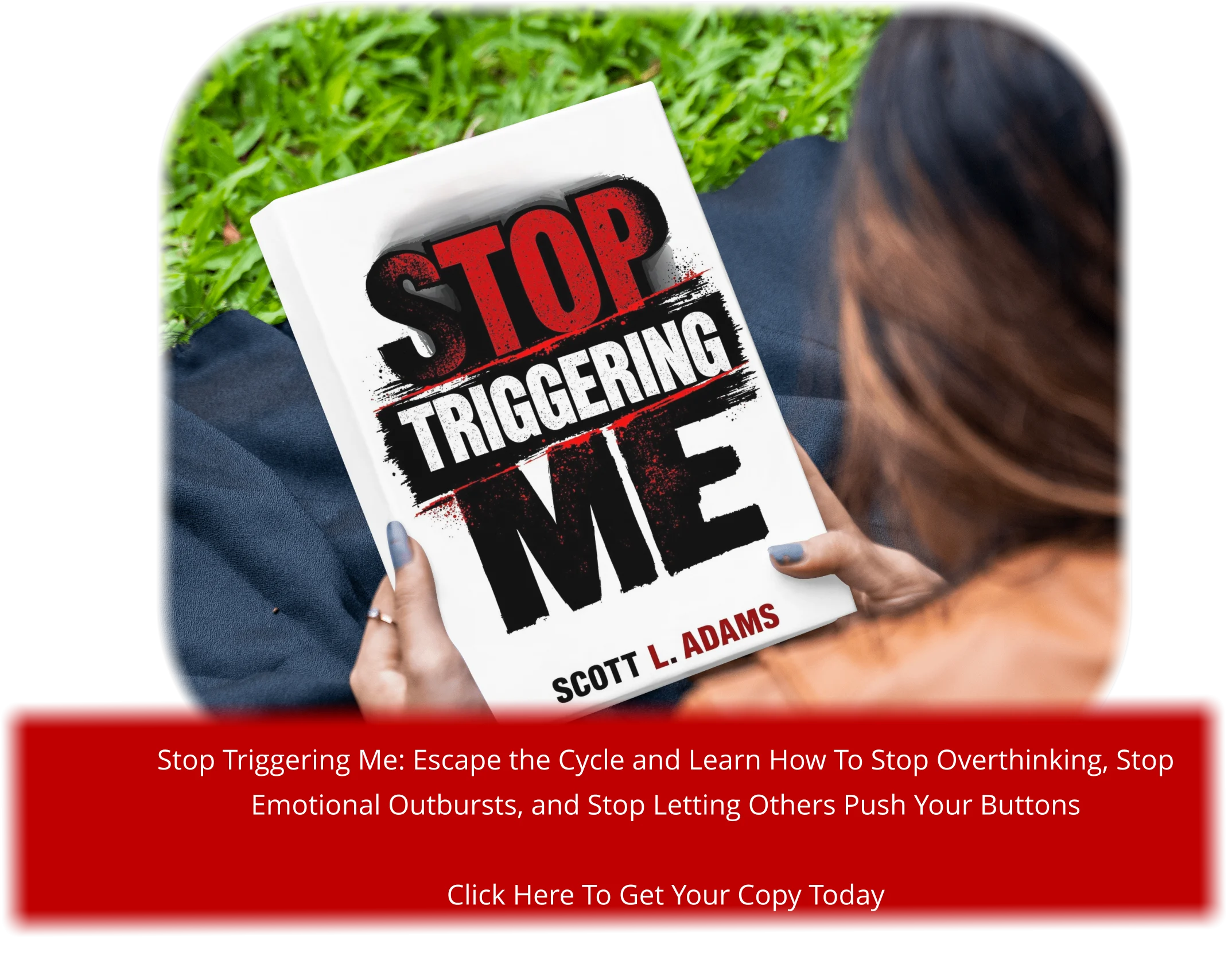Have you ever wondered why some people seem unshakable, even in the face of overwhelming challenges? I remember watching a friend of mine, Sarah, during a high-stakes presentation. While the rest of us were sweating bullets, she stood there, calm and composed, delivering her speech flawlessly. It wasn’t just talent or intelligence that set her apart—it was her ability to stay focused and resilient under pressure.
Research shows that success often hinges on more than just natural ability. Studies on West Point cadets reveal that those with higher grit scores were 60% more likely to complete their rigorous training1. Similarly, Ivy League students with greater perseverance outperformed peers with higher SAT scores1. These findings highlight that mental toughness—the ability to push through challenges—plays a bigger role in achieving goals than we often realize.
Whether you’re facing a personal challenge or striving for a professional goal, building this quality can make all the difference. It’s not about being perfect; it’s about staying committed, even when things get tough. And the good news? Anyone can develop this skill with practice and dedication.
Key Takeaways
- Mental toughness often outweighs talent or intelligence in achieving success.
- Studies show that grit is a strong predictor of performance in education, sports, and work1.
- Building resilience helps you stay calm and focused under pressure.
- Consistent effort and commitment are key to developing this skill.
- Anyone can improve their ability to handle challenges with practice.
Understanding the Foundations of Calm Under Pressure
What does it truly mean to stay calm when everything around you feels chaotic? For me, it’s about finding focus amidst the noise. I’ve seen people who seem unshakable in high-pressure situations, and it’s not just luck—it’s a skill they’ve honed through practice and grit.
Defining Calmness in High-Pressure Situations
Calmness isn’t about avoiding stress—it’s about managing it effectively. Studies show that individuals with higher grit scores are better at handling pressure2. This means they stay committed to their goals, even when challenges arise. It’s not about being fearless; it’s about having the ability to push through fear.
Research also highlights that regular practice can transform stress into a productive force3. By consistently responding to pressure in a controlled way, you can build resilience over time. This is why athletes who practice mindfulness techniques reduce their anxiety levels by up to 30%4.
The Science Behind Our Stress Response
Our bodies are wired to react to stress, but how we respond makes all the difference. The 4C model—Challenge, Commitment, Control, and Confidence—has been shown to enhance leadership effectiveness by 30% in high-stress environments2. This model emphasizes the importance of mindset in managing pressure.
Another key factor is mental flexibility. People who score higher in this area are less likely to experience negative thoughts and more likely to perform well under pressure3. By adopting a flexible mindset, you can find a better way to navigate challenges.
Ultimately, staying calm under pressure is about more than just willpower. It’s about developing the right habits, mindset, and ability to adapt. With consistent effort, anyone can improve their resilience and thrive in high-pressure situations.
The Role of Mental toughness in Achieving Goals
What separates those who succeed from those who don’t? It’s not just talent or intelligence—it’s the ability to keep going when things get tough. I’ve seen this firsthand in my own life. When I started working on a long-term project, I realized that talent alone wasn’t enough. It was the consistent effort over time that made the difference.
Grit vs. Talent: Uncovering What Truly Matters
Studies from West Point and Ivy League research show that perseverance over time matters more than transient talent5. It’s not a single thing like fleeting motivation or momentary brilliance that determines success. Instead, it’s the consistent work and commitment in every situation that counts.
For example, athletes with higher levels of resilience perform better under pressure5. This isn’t about being naturally gifted—it’s about showing up every day and putting in the effort. Something as intangible as perseverance can be a measurable asset.
I learned this the hard way. When I faced a challenging situation at work, I realized that adapting to everyday obstacles required a system that works. It wasn’t about quick fixes but about respecting the gift of consistent effort.
Research also highlights that structured, resilient approaches lead to significant accomplishments6. By focusing on long-term goals and breaking them into manageable steps, you can achieve more than relying solely on natural gifts. It’s about the time and effort you invest, not just the talent you’re born with.
Key Psychological Principles Behind Resilience & Grit
How do some people manage to stay composed even when everything seems to be falling apart? I’ve often wondered this, especially when I see individuals who handle stress with ease. The answer lies in understanding the psychological principles that build resilience and grit.
Building mental strength isn’t about being born with a natural ability to handle stress. It’s about developing habits and skills through consistent effort. Research shows that individuals with high levels of resilience are more likely to overcome adversity and achieve their goals7.
Emotional Intelligence and Its Impact on Resilience
Emotional intelligence plays a crucial role in staying calm under pressure. It’s about recognizing and managing your emotions effectively. Studies suggest that people who are genuinely passionate about their pursuits are more likely to display grit when confronted with challenges7.
For example, I once worked with a colleague who always seemed unshakable during tight deadlines. She wasn’t just skilled—she was emotionally aware. She knew when to take a break, how to manage her stress, and when to ask for help. This balance of emotional awareness and action is what sets resilient individuals apart.
Mind-Body Connection in Overcoming Challenges
The mind and body are deeply connected, and this relationship is key to building resilience. Physical exercise, for instance, not only strengthens the body but also boosts emotional regulation. Research highlights that practicing self-compassion can enhance resilience by maintaining motivation and optimism during setbacks7.
I’ve found that even simple practices like deep breathing or a short walk can make a big difference. These actions help me reset and approach challenges with a clearer mind. It’s not about avoiding stress but managing it in a way that works for you.
Ultimately, resilience and grit are about more than just willpower. They’re about understanding yourself, managing your emotions, and taking care of your body. With consistent effort, anyone can develop these skills and thrive under pressure.
Practical Strategies for Strengthening Your Mental Edge
Ever notice how some people thrive under pressure while others crumble? I’ve spent years figuring out what makes the difference, and it often comes down to daily habits. Small, consistent actions can sharpen your focus and build resilience over time.
One of the most effective strategies I’ve found is incorporating physical exercise into my routine. Whether it’s a morning jog or a quick yoga session, moving my body helps clear my mind and prepares me for challenges. Research shows that regular physical activity boosts emotional regulation and reduces stress8.
Another key is developing a structured daily routine. I start my day with a 10-minute journaling session to reflect on my goals and challenges. This simple habit helps me stay focused and intentional. Studies suggest that consistent journaling can improve self-awareness and emotional control9.
Fine-tuning your behavior is also crucial. I’ve learned to observe my reactions under pressure and adjust accordingly. For example, when I feel overwhelmed, I use the 5-4-3-2-1 grounding technique to regain focus. This mindfulness practice activates all senses and helps manage stress effectively10.
Finally, don’t underestimate the power of gratitude. Each day, I write down three things I’m grateful for. This practice has shifted my mindset and improved my overall well-being. Research highlights that gratitude can reduce anxiety and enhance resilience8.
Building a sharper mental edge isn’t about quick fixes—it’s about committing to small, consistent actions. By integrating these strategies into your daily life, you can strengthen your focus, improve your behavior, and thrive under pressure.
Adapting Military Insights for Daily Mental Strength
What can we learn from the intense discipline of military life? I’ve always been fascinated by how military training transforms ordinary individuals into resilient leaders. One of the most compelling examples is West Point’s Beast Barracks, where cadets endure grueling physical and mental challenges to build exceptional fortitude.
During Beast Barracks, cadets are pushed to their limits, often training for days with minimal sleep. This process, known as “callusing the mind,” helps them develop the ability to stay focused under extreme pressure11. It’s not just about physical endurance—it’s about cultivating a mindset that thrives in adversity.
Lessons Learned from West Point and Beast Barracks
One of the key lessons I’ve taken from military training is the importance of showing up consistently, even when it feels overwhelming. As David Goggins, a former Navy SEAL, puts it, “Most people quit when they’re only 40% spent.” This mindset shift has helped me approach challenges as opportunities for growth.
Another strategy I’ve adopted is the “Four-by-Four for Four” breathing method used by SEALs to control anxiety11. This simple technique helps me stay calm and focused during high-pressure situations. It’s a practical tool that anyone can use to build resilience.
Research also highlights that consistent training under varying conditions is essential for building mental and physical endurance12. By exposing yourself to discomfort regularly, you can develop the fortitude needed to handle life’s challenges. This doesn’t mean enlisting in the military—it’s about adopting military-inspired habits in your daily routine.
Ultimately, the strategies outlined in various articles and books provide a step-by-step strategy for transforming everyday challenges into opportunities for growth. By viewing each challenge as an opportunity, you can turn adversity into a calculated, strategic approach that reinforces your mental strength.
Overcoming Adversity with a Growth Mindset
When faced with adversity, how do some people manage to turn setbacks into stepping stones? I’ve often asked myself this question, especially during moments when life felt overwhelming. The answer lies in embracing challenges as opportunities for growth, rather than viewing them as roadblocks.
One of the most transformative experiences I’ve had was during a project that didn’t go as planned. Instead of giving up, I chose to reflect on what went wrong and how I could improve. This moment of failure became a catalyst for personal growth, teaching me the value of resilience and adaptability.
Learning from Setbacks and Embracing Challenges
Setbacks are inevitable, but how we respond to them defines our success. Research shows that individuals who view challenges as opportunities for learning are more likely to achieve their goals13. This mindset shift not only improves emotional health but also strengthens our ability to manage stress effectively.
For example, I once faced a significant event at work that left me feeling defeated. Instead of dwelling on the negativity, I focused on the lessons learned. This approach helped me develop stronger coping strategies and a more resilient outlook. Studies suggest that reflecting on setbacks can enhance self-awareness and emotional control14.
Embracing challenges also means being open to change. General James Mattis once said, “The most important six inches on the battlefield is between your ears.” This quote resonates deeply with me because it highlights the power of mindset in overcoming adversity. By adopting a growth mindset, we can transform every difficult moment into a stepping stone for future success.
Ultimately, the journey of overcoming adversity is about more than just willpower. It’s about developing the habits and mindset that allow us to thrive in the face of challenges. With consistent effort, anyone can turn setbacks into opportunities for growth and achieve their full potential.
Embracing Change: Building Habits for Consistent Success
Change can feel overwhelming, but it’s also the key to unlocking consistent success. I’ve learned that small, daily routines create a solid foundation for resilience. Over time, these habits compound, leading to significant growth and progress.
One of the most impactful habits I’ve adopted is starting my day with a clear plan. This simple routine helps me stay focused and intentional. Studies show that individuals who follow structured daily routines are 60% more likely to achieve their goals15.
Daily Routines and the Power of Constructive Feedback
Feedback is a powerful tool for improvement. I’ve found that actively seeking constructive criticism helps me refine my approach and stay on track. Research highlights that individuals who embrace feedback are 50% more likely to experience career advancement16.
For example, I once received feedback on a project that initially felt discouraging. Instead of dismissing it, I used it as a learning opportunity. This mindset shift not only improved my work but also strengthened my ability to handle challenges.
Transforming Challenges into Opportunities for Growth
Challenges are inevitable, but they can also be opportunities for growth. I’ve learned to view setbacks as stepping stones rather than roadblocks. Studies suggest that 68% of individuals who embrace failure as a learning tool achieve long-term success16.
One strategy I use is reflecting on past experiences to identify lessons learned. This practice has helped me develop stronger coping mechanisms and a more resilient mindset. By consistently applying these lessons, I’ve been able to turn adversity into progress.
Ultimately, embracing change and building habits for success is about more than just willpower. It’s about developing a system that supports continuous learning and improvement. With consistent effort, anyone can transform challenges into opportunities for lasting growth.
Conclusion
Why do some people handle challenges with ease while others struggle? The answer lies in research and focus. Studies show that understanding the 4C model—control, commitment, confidence, and challenge—can help you navigate any obstacle17. It’s not about avoiding stress but managing it effectively.
Throughout this article, we’ve explored strategies to stay calm under pressure, from practical habits to military-inspired insights. Each step reinforces the importance of questioning assumptions and listening to your body. Small, consistent changes can build a resilient framework for success.
I’ve learned that every challenge is an opportunity to learn. By reflecting on setbacks and staying committed, you can transform adversity into growth. Remember, someone in the world is facing similar struggles—your journey can inspire them.
Take this as a call to action: stay focused, embrace change, and keep moving forward. With every word and lesson shared, you’re building the strength to overcome any obstacle.







